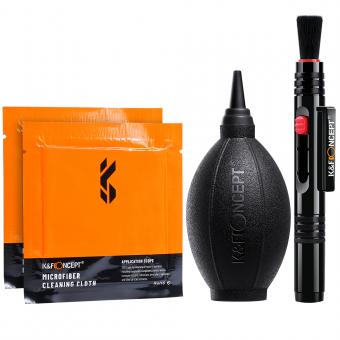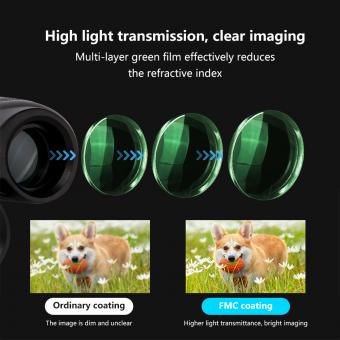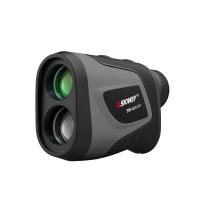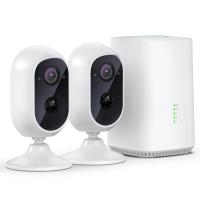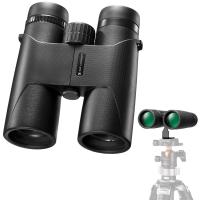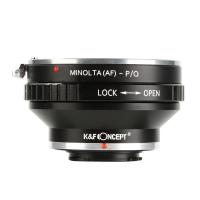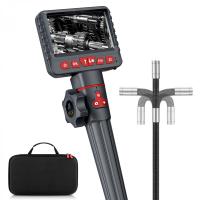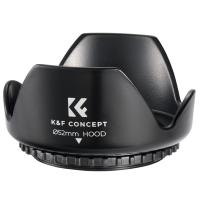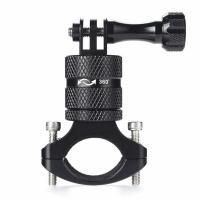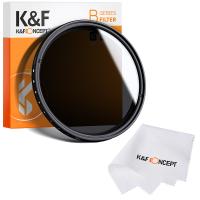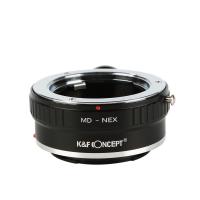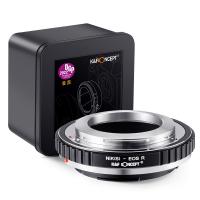How To Safely Use A Microscope ?
To safely use a microscope, it is important to follow certain guidelines. Firstly, ensure that the microscope is placed on a stable surface to prevent any accidental falls or damage. When handling the microscope, use both hands to hold it firmly and avoid any sudden movements. Adjust the focus knobs slowly and gently to avoid damaging the specimen or the microscope lens.
When placing a slide on the microscope stage, make sure it is clean and free from any debris. Use the lowest magnification objective lens first and gradually increase the magnification as needed. Avoid touching the lens with your fingers and use lens paper or a soft cloth to clean it if necessary.
To prevent eye strain, adjust the lighting of the microscope to a comfortable level. Additionally, it is important to keep the microscope clean by wiping it with a soft cloth after each use and storing it in a dust-free environment.
Lastly, always follow any specific instructions provided by the manufacturer and consult the microscope's user manual for any additional safety precautions.
1、 Proper handling and care of the microscope
Proper handling and care of the microscope is essential to ensure its longevity and accurate results. Here are some guidelines on how to safely use a microscope:
1. Setting up the microscope: Start by placing the microscope on a stable surface, ensuring it is level. Adjust the light source to provide adequate illumination for your specimen. Use the coarse adjustment knob to lower the stage to its lowest position.
2. Slide preparation: Clean your slides thoroughly to remove any dust or debris. Place your specimen on the slide and add a drop of mounting medium if necessary. Gently lower a coverslip onto the specimen, avoiding any air bubbles.
3. Focusing: Begin with the lowest magnification objective lens. Use the coarse adjustment knob to bring the specimen into rough focus, then use the fine adjustment knob for precise focusing. Avoid forcing the focus knobs, as this can damage the microscope.
4. Changing magnification: To switch to a higher magnification, rotate the nosepiece to select the desired objective lens. Refocus using the fine adjustment knob.
5. Proper lighting: Adjust the light intensity to avoid overexposure or underexposure of the specimen. Use the diaphragm to control the amount of light passing through the specimen.
6. Cleaning and storage: After use, turn off the light source and unplug the microscope. Clean the lenses with lens paper or a soft cloth, using a gentle circular motion. Store the microscope in a clean, dust-free environment, preferably in a protective case.
It is important to note that with the ongoing COVID-19 pandemic, additional precautions should be taken. Disinfect the microscope before and after each use, paying extra attention to high-touch areas such as the focus knobs and stage controls. Wash your hands thoroughly before and after using the microscope, or use hand sanitizer if soap and water are not readily available.
By following these guidelines and adapting to the latest safety recommendations, you can ensure the safe and effective use of a microscope while maintaining its optimal performance.

2、 Adjusting the focus and magnification settings correctly
How to safely use a microscope:
1. Adjusting the focus and magnification settings correctly: Before using a microscope, it is important to adjust the focus and magnification settings correctly. Start by placing a slide on the stage and securing it with the stage clips. Use the coarse adjustment knob to bring the slide into focus at the lowest magnification. Once the image is clear, use the fine adjustment knob to further refine the focus. Gradually increase the magnification by rotating the objective lenses, ensuring that the image remains in focus at each level.
It is crucial to follow safety guidelines while using a microscope to protect both yourself and the equipment. Here are some additional points to consider:
2. Proper handling: Always handle the microscope with care, using both hands to support it. Avoid placing excessive pressure on the stage or the lenses, as this can damage the delicate components.
3. Cleanliness: Keep the microscope clean by using lens paper or a soft cloth to wipe the lenses. Avoid using harsh chemicals or abrasive materials that could scratch the lenses. Additionally, ensure that your hands are clean and dry before handling the microscope to prevent smudges or contamination.
4. Light source: If using a microscope with a light source, be cautious when adjusting the brightness. Start with a low intensity and gradually increase it to avoid damaging your eyes or overheating the specimen.
5. Storage: When not in use, store the microscope in a clean and dry environment. Cover it with a dust cover to protect it from dust and other contaminants.
Remember, always refer to the manufacturer's instructions and guidelines specific to your microscope model for the safest and most accurate usage.

3、 Using appropriate lighting techniques for optimal viewing
Using appropriate lighting techniques for optimal viewing is an essential aspect of safely using a microscope. Proper lighting not only ensures clear and accurate observations but also helps prevent eye strain and potential damage to the microscope and specimens. Here are some guidelines to follow when using a microscope:
1. Adjust the light intensity: Begin by setting the light intensity to a low level and gradually increase it until the specimen is adequately illuminated. Avoid using excessive light as it can cause glare and distort the image.
2. Use the correct light source: Microscopes typically have two types of light sources - transmitted and reflected. Transmitted light is used for transparent or translucent specimens, while reflected light is suitable for opaque objects. Select the appropriate light source based on the nature of your specimen.
3. Position the light source correctly: Ensure that the light source is properly aligned with the condenser and diaphragm. Adjust the position of the light so that it evenly illuminates the specimen without casting shadows or causing hotspots.
4. Utilize the condenser: The condenser is a lens system located beneath the stage that helps focus and direct light onto the specimen. Adjust the condenser's height and aperture to achieve optimal illumination and contrast.
5. Use filters if necessary: Some microscopes have built-in filters that can enhance the quality of the image. For example, a blue filter can reduce yellowish tints, while a polarizing filter can minimize glare and improve contrast.
6. Avoid prolonged exposure: Limit the duration of microscope use to prevent overheating of the light source and potential damage to the specimen. If the microscope becomes warm, allow it to cool down before continuing.
7. Clean the microscope regularly: Dust and debris can accumulate on the light source, condenser, and lenses, affecting the quality of the image. Clean these components regularly using a soft, lint-free cloth or lens paper to maintain optimal performance.
It is important to note that the latest advancements in microscope technology, such as LED lighting and digital imaging, have significantly improved the lighting techniques and overall user experience. These advancements offer better control over lighting intensity, color temperature, and even allow for real-time image analysis and sharing. Staying updated with the latest developments in microscope lighting can further enhance the safety and effectiveness of microscope usage.

4、 Preparing and mounting specimens for observation
Preparing and mounting specimens for observation is an essential step in safely using a microscope. By following proper procedures, you can ensure accurate and clear observations while also protecting yourself and the microscope.
Firstly, it is crucial to handle specimens with care. Use clean, sterile tools to collect and transfer specimens to prevent contamination. Avoid touching the specimen directly with your hands, as oils and dirt can interfere with the observation. Additionally, ensure that the specimen is small enough to fit on the microscope slide and is properly prepared according to the specific requirements of the specimen type.
Next, prepare a clean microscope slide by wiping it with a lint-free cloth or lens paper. Place a drop of mounting medium, such as water or a specialized mounting solution, in the center of the slide. Gently place the specimen onto the drop, taking care not to damage or distort it. If necessary, use a fine needle or tweezers to manipulate the specimen into the desired position.
Once the specimen is mounted, carefully lower a coverslip onto the slide, starting from one edge and slowly lowering it to avoid trapping air bubbles. Press down gently to ensure the coverslip is flat and secure. Excess mounting medium can be removed by gently blotting the slide with a tissue.
Finally, before placing the slide on the microscope stage, ensure that the objective lens is in the lowest position to prevent accidental contact with the slide. Slowly raise the objective lens while observing through the eyepiece until the specimen comes into focus. Adjust the focus and magnification as needed for a clear view.
It is important to note that the latest point of view emphasizes the use of proper personal protective equipment (PPE) when handling specimens. This includes wearing gloves, lab coats, and safety goggles to protect against potential hazards. Additionally, proper disposal of used slides and specimens is essential to prevent the spread of any potential pathogens.
By following these guidelines and incorporating the latest safety recommendations, you can safely prepare and mount specimens for observation under a microscope.


